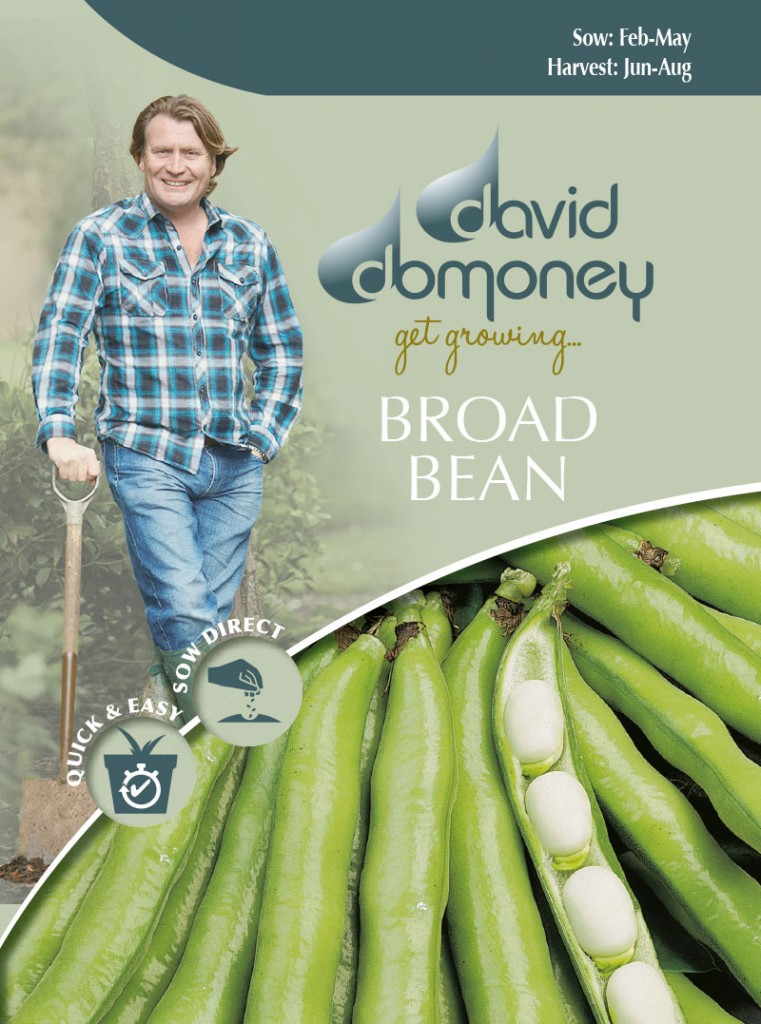Broad Bean (Vectra)
A reliable variety for plentiful crops of large well-filled pods of tender and succulent white beans. Often thought of as a delicacy because of their spectacular flavour, broad beans are in fact extremely easy to grow. Not only are broad beans grown at home fresher, they taste even better than shop bought ones and it can save you a fortune. Shelling the first crop of the season is one of the great delights of vegetable gardening.
Growing Advice

Sow outdoors March to July. Broad beans are best sown outdoors for ease, unless the soil is very heavy, cold or waterlogged in which case an indoor sowing is preferable. If possible choose a sunny location for best results. Beans like good fertile soil so it’s worth digging in a slow release fertiliser or some organic matter before you start. Sow directly where plants are to grow. Make two shallow trenches 5cm deep and 25cm apart. Place the seeds in the trenches 20cm apart creating a staggered double row then cover the seeds with fine soil. Leave 60cm between each double row to allow easy access and to good ventilation. Keep the soil moist and remove any weeds as they appear.

Top Tips About Seeds
Once the seed packet has been opened, the seeds can be stored in an airtight container until required for further sowings. Broad bean seeds will maintain their vigour for a good number of years.

Broad beans are not recommended for patio pots
Blackfly (Black bean aphids) are a common problem. However, an infestation usually starts at the tip of the plant so the prompt removal of the tip along with the aphids on it, will quickly deal with the problem in most instances. Plants can collapse or fall over, especially in exposed windy locations. Positioning stakes or canes at the ends of the row and tying string lines between them can provide support for the plants and prevent this happening.
Harvest from June to August. The flowers bloom in succession from the bottom of the plant upwards so the lowest bean pods will also mature first. So it is best to also harvest from the bottom up. Immature pods can be eaten like French beans but are usually left to mature and then shelled for the juicy beans inside. Don’t leave them too late however or the beans can become tough and starchy.

Ideas for using your broad beans
When flowering is over and pod growth slows, pinch out the tip of the plant to direct its resources into growing pods. The tips of the plants are very tasty and can be lightly boiled or steamed and eaten like spinach or spring greens. For improved pod production be sure to water the plants well when they are flowering. Shelled beans freeze very well but if you prefer to dry them then the best way is to pull up whole plants and hang them until the pods are dry. When the harvests are over the nitrogen rich plants can be dug into the soil as a green manure to provide nutrients for later crops.

Leave A Comment